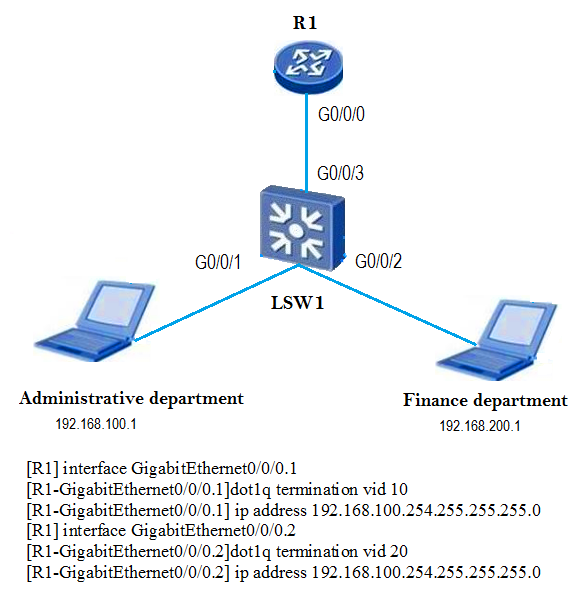According to the configuration of single-armed routing in the following figure, the administrative department and finance department can communicate with each other even the proxy ARP is disabled on the subinterface on R1.

According to the configuration of single-armed routing in the following figure, the administrative department and finance department can communicate with each other even the proxy ARP is disabled on the subinterface on R1.

The administrative department and the finance department are on different VLANs (VLAN 10 and VLAN 20) with different subnets (192.168.100.0/24 and 192.168.200.0/24). For them to communicate, inter-VLAN routing must be configured. The router (R1) does not rely on proxy ARP for inter-VLAN routing but instead uses routing capabilities to forward packets between the subinterfaces. Since the configuration shows subinterfaces with appropriate IP addresses and VLAN tags, the inter-VLAN routing can function properly without proxy ARP being enabled. Proxy ARP would not be necessary for this setup, making the answer false.
answer should be true
Answer is false - the command " arp broadcast enable" needs to be configured on each subinterface to permit inter-VLAN routing, per below: https://support.huawei.com/enterprise/en/doc/EDOC1000178168/52f1384c/example-for-configuring-dot1q-termination-sub-interfaces-to-implement-inter-vlan-communication-across-different-networks